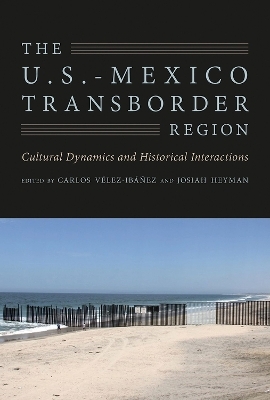
The U.S.-Mexico Transborder Region
University of Arizona Press (Verlag)
978-0-8165-3626-9 (ISBN)
The U.S.-Mexico Transborder Region presents advanced anthropological theorizing of culture in an important regional setting. Not a static entity, the transborder region is peopled by ever-changing groups who face the challenges of social inequality: political enforcement of privilege, economic subordination of indigenous communities, and organized resistance to domination.The book, influenced by the work of Eric Wolf and senior editor Carlos Velez-Ibanez, centers on the greater Mexican North/U.S. Southwest, although the geographic range extends farther. This tradition, like other transborder approaches, attends to complex and fluid cultural and linguistic processes, going beyond the classical modern anthropological vision of one people, one culture, one language. With respect to recent approaches, however, it is more deeply social, focusing on vertical relations of power and horizontal bonds of mutuality.
Velez-Ibanez and Heyman envision this region as involving diverse and unequal social groups in dynamic motion over thousands of years. Thus the historical interaction of the U.S.-Mexico border, however massively unequal and powerful, is only the most recent manifestation of this longer history and common ecology. Contributors emphasize the dynamic "transborder" quality-conflicts, resistance, slanting, displacements, and persistence-in order to combine a critical perspective on unequal power relations with a questioning perspective on claims to bounded simplicity and perfection.
The book is notable for its high degree of connection across the various chapters, strengthened by internal syntheses from notable border scholars, including Alejandro Lugo and Roberto Alvarez. In the final section, Judith Freidenberg draws general lessons from particular case studies, summarizing that "access to valued scarce resources prompts the erection of human differences that get solidified into borders," dividing and limiting, engendering vulnerabilities and marginalizing some people.
At a time when understanding the U.S.-Mexico border is more important than ever, this volume offers a critical anthropological and historical approach to working in transborder regions.
Contributors: Amado Alarcon, Robert R. Alvarez, Jr., Miguel Diaz-Barriga, Margaret Dorsey, Judith Noemi Freidenberg, Ruth Gomberg-Munoz, James B. Greenberg, Josiah Heyman, Jane H. Hill, Sarah Horton, Alejandro Lugo, Luminita-Anda Mandache, Corina Marrufo, Guillermina Gina Nunez-Mchiri, Anna Ochoa O'Leary, Luis F. B. Plascencia, Lucero Radonic,
Diana Riviera, Thomas E. Sheridan, Kathleen Staudt, Carlos G. Velez-Ibanez.
Carlos G. Velez-Ibanez is Regents' Professor and Motorola Presidential Professor of Neighborhood Revitalization in the School of Transborder Studies and Professor of Human Evolution and Social Change at Arizona State University. His numerous honors include the 2004 Robert B. Textor and Family Prize for Excellence in Anticipatory Anthropology and the 2003 Bronislaw Malinowski Medal. Velez-Ibanez was named as corresponding member of the Mexican Academy of Sciences (Miembro Correspondiente de la Academia Mexicana de Ciencias) in 2015, and he is author of An Impossible Living in a Transborder World: Culture, Confianza, and Economy of Mexican-Origin Populations.Josiah Heyman is a professor of anthropology, Endowed Professor of Border Trade Issues, and director of the Center for Interamerican and Border Studies at the University of Texas at El Paso. He is the editor of States and Illegal Practices and author of Life and Labor on the Border: Working People of Northeastern Sonora, 1886-1986 and Finding a Moral Heart for U.S. Immigration Policy: An Anthropological Perspective. He has published more than one hundred scholarly articles and book chapters, and in 1999 received the Curl Essay Prize of the Royal Anthropological Institute of Great Britain and Ireland for "Respect for Outsiders? Respect for Law? The Moral Evaluation of High-Scale Issues by U.S. Immigration Officers."
| Erscheinungsdatum | 24.03.2017 |
|---|---|
| Zusatzinfo | 17 black & white illustrations, 11 maps, 11 tables |
| Verlagsort | Tucson |
| Sprache | englisch |
| Maße | 152 x 229 mm |
| Gewicht | 675 g |
| Themenwelt | Naturwissenschaften ► Geowissenschaften ► Geografie / Kartografie |
| Sozialwissenschaften ► Ethnologie ► Völkerkunde (Naturvölker) | |
| Sozialwissenschaften ► Soziologie ► Spezielle Soziologien | |
| ISBN-10 | 0-8165-3626-0 / 0816536260 |
| ISBN-13 | 978-0-8165-3626-9 / 9780816536269 |
| Zustand | Neuware |
| Haben Sie eine Frage zum Produkt? |
aus dem Bereich


